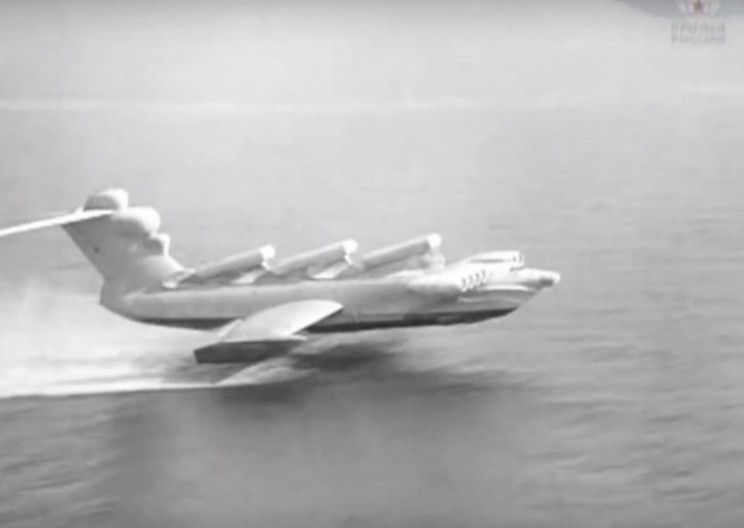Here’s a closer look at the Ekranoplan

Often referred to as the Caspian monster, the ekranoplan is one of the most freakish designs that were actually brought to life in a period where people were peaking at innovation in military hardware. It was designed to stay above the surface of water like a hovercraft but travel at far greater speeds like that of a commercial aeroplane. This was achieved with the help of an air cushion.
Hovercrafts have downward facing fans which generate the necessary lift while Ekranoplans used its wings and built up speed to do the same. In addition to this with the help of something called the ground effect (this reduces induced drag as the wingtip vortices aren’t formed) helps it travel at much higher speeds thana conventional aeroplane while retaining its ability to cover large distances and carry loads . This was very important for the Russians during the cold was as its primary purpose was to get troops in and out of the battle field under the radar.
The Ekranoplan is part of a larger fleet of the navy called ‘Lun’ in the Russian military. Capable of cruising at around 450kmph and a max speed of 550 kmph and a massive range of around 2000km. This 286-ton beast was powered by eight Kuznetsov NK-87 turbofans each producing a massive thrust of 127.4 KN each.IT had a wingspan of 44m and a length of 73.8m and a height of 19.2m. It needed a crew of 15 to operate it. This was used more than just a reconnaissance vehicle , sometimes it was often used as an ayyach vehicle too. It was equipped with two 23mm cannons and and two twin turret forward and backward facing missile tubes .
It’s offensive and definsive objectives included interception and neutralisation of other aeral, ground and naval combat vehicles and missiles. It was one of the most formidable weapons of the time and had several nicknames including the aircraft carrier killer, all of them well earned . The art of war created this masterpiece and it will not be forgotten in time. The ekranoplan never reached the battlefield in time , it was a bit too late which furthermore led to it’s decommissioning.
This beautiful work of art never reached completion as the war had come to an end , it was finally named the ‘spastel’ which meant rescue . The work was about 90% complete when the military stopped funding the project. MD-160 was the sole completed Lun-class ekranoplane.The sole piece entered service in the Black Sea fleet in 1987. It was finally decommissioned in the late 1990’s. Now it’s remains can be found in an abandoned naval base in Kaspiysk.
